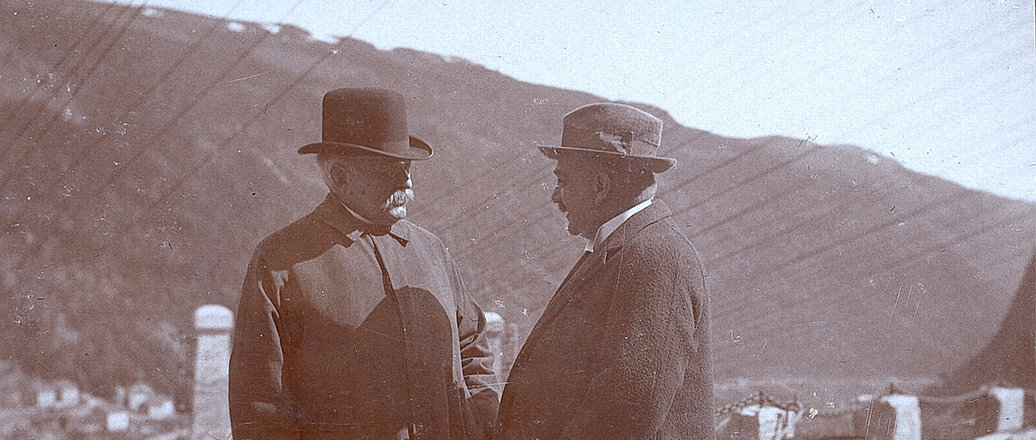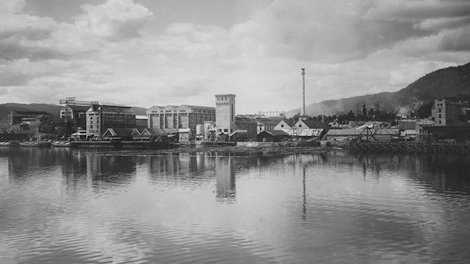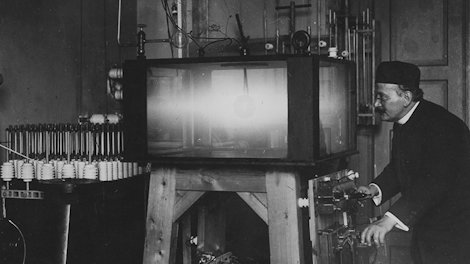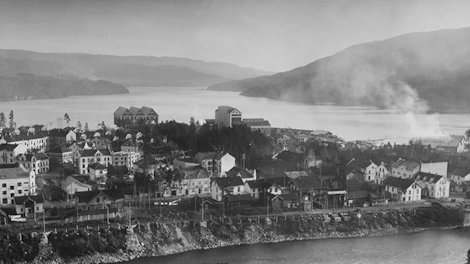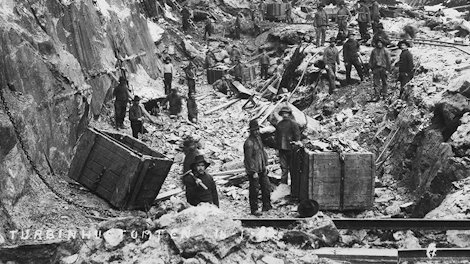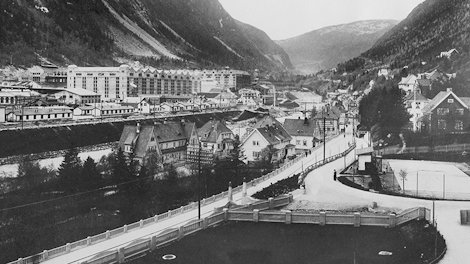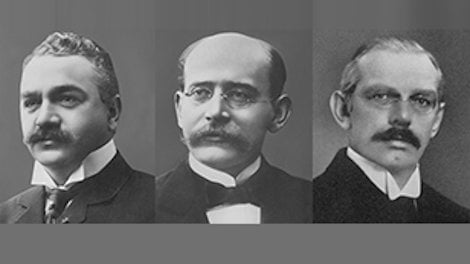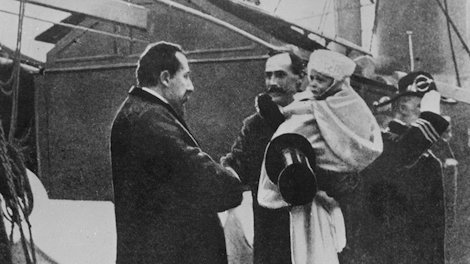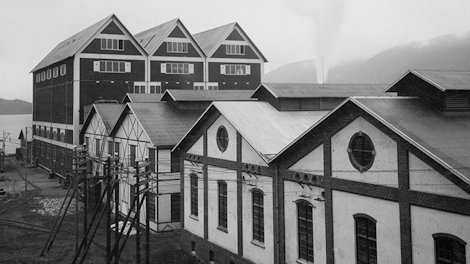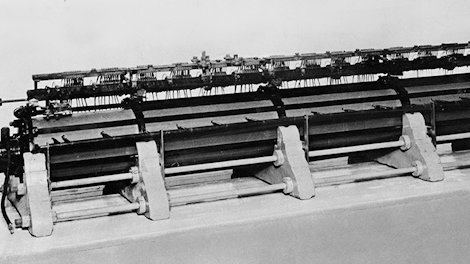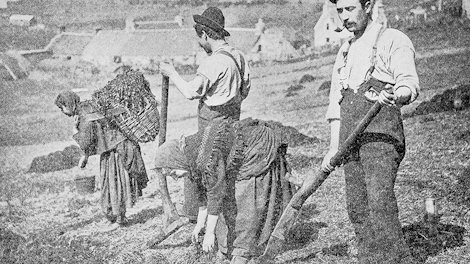A number of practical matters were settled straight away. The company was to be managed by a French-Scandinavian board of directors - eight board members and a managing director. Sam Eyde was appointed managing director for a 10-year period. Eyde, Marcus Wallenberg, who was elected chairman of the board, and the Frenchman Edmond Moret were the three most important people in the new company.
Both Scandinavian and European
The total share capital was NOK 7.5 million (nearly 1 million euro at 2003 exchange rate). The Swedish bank Enskildabanken of Stockholm controlled half, and only 8 per cent of the shares were held by Norwegians. The new company had assumed the patents protecting the process, and the main patent was applied for in 25 countries. The French backers had also demanded that the new company secure an option on the Rjukan waterfall. An important prerequisite for future growth was thus secured.
The establishment of the new company was no silent affair. Eyde and Birkeland had already been guests of honor at the opening of the Institute of Technology and Chemistry in Berlin. On this occasion, Dr. Otto Witt, a recognized chemist who had long worked on the nitrogen question, gave the first public presentation of the arc process.
Witt described how modern industry was dependent on the natural sciences, and pointed out that many of the Norwegian engineers who had worked on the Norsk Hydro process had been educated at the Berlin institute. He did not mention his own role as a consultant over several years.
For the world market A few days after the inception of the company, Birkeland and Eyde addressed a meeting of the Science Society in Christiania. Their lectures were widely referred to, and also published in full, in several publications.
This was one of Eyde’s periods of glory. He was proud to relate that the Notodden plants were now producing nitric acid, calcium nitrate and nitrite. “Calcium nitrate, which has not previously been on the market, can be used in industry, and also as Chilean saltpeter. Tests at various agricultural schools, in particular at Aas Agricultural College by the head of the college, Mr. Sidelien, have shown that calcium nitrate is as good as natural saltpeter and even somewhat better on sandy soil.”
Waterfalls would be developed and plants would be built. Enormous sums would be invested. But there was no cause for concern. The new industry would not market its products only in “our little country,” but all around the world, as Eyde explained.
Such ambitious plans were not common in Norway in those days, nor the ability to put them into practice. This was not just a question of building a new industry, two new towns also needed to be built. The price tag of NOK 60 – 80 million (EUR 8-10 million at 2003 exchange rate) was a dazzling amount at the time, equal to the combined capital of all of the nation’s 85 banks in1905.
This date, 2 December, is still celebrated in the company every year as ”Hydro’s birthday”.
Updated: May 15, 2024
